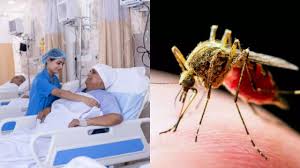The chikungunya surge has transformed Pakistan’s bustling port city of Karachi into a focal point of medical concern, with healthcare facilities struggling to manage an influx of patients suffering from this debilitating viral infection. Major government hospitals are now confronting a daunting reality: between 500 and 750 suspected cases arrive at their doors daily, placing unprecedented strain on an already challenged public health infrastructure. This outbreak, which began gaining momentum in May, has particularly affected elderly residents and those with underlying conditions like diabetes.
Understanding Chikungunya’s Impact
The virus, whose name originates from the Kimakonde language meaning “to become contorted,” spreads through the bite of infected Aedes aegypti mosquitos – the same species responsible for dengue and Zika transmission. According to records obtained from government sources, 172 individuals tested positive through PCR testing between May and September, though experts suggest these numbers significantly underrepresent the actual scale of the outbreak. The prohibitive cost of PCR testing, ranging from 7,000 to 8,000 rupees ($25-28), has forced many to rely on symptom-based diagnosis and basic blood tests showing low platelet counts.
Chikungunya Surge: Managing the Health Crisis
The situation in Karachi’s hospitals presents a concerning picture of the healthcare response. The Jinnah Postgraduate Medical Centre, while offering free testing, lacks dedicated chikungunya wards, forcing patients to share general wards without proper mosquito protection. Medical professionals, including Dr. Abdul Wahid Rajput from the Sindh Infectious Diseases Hospital and Research Centre, predict the outbreak will persist until December, alongside dengue cases. The virus’s symptoms typically manifest three to seven days post-infection, presenting as severe joint pain, fever, headaches, nausea, and occasional rash. While most recover within weeks, some patients, particularly the elderly and those with pre-existing conditions, face more severe complications including neurological issues, paralysis, and in rare cases, coma.
Global Context and Prevention Measures
The outbreak in Pakistan represents part of a broader global health challenge, with approximately 460,000 chikungunya cases reported worldwide in 2024. Brazil leads with 391,754 cases, followed by India with 69,439 cases. The virus, first identified in Tanzania in 1952, has spread to 118 countries, becoming endemic in various regions including Africa, Southeast Asia, and the Americas. While a single-dose vaccine (IXCHIQ) has received approval in the United States, Canada, and Europe, Pakistan awaits WHO authorization before implementing vaccination programs. In response to the current crisis, local authorities have initiated mosquito eradication efforts through spraying campaigns and larvicidal activities, though residents criticize these measures as insufficient.
Treatment options remain limited to symptomatic relief, with healthcare providers cautioning against the use of certain pain relievers due to potential complications, particularly when dengue cannot be ruled out. Prevention strategies focus on mosquito bite prevention through protective clothing, repellents, and eliminating standing water where mosquitos breed. The Pakistani government, through the Sindh Health Department, has launched public awareness campaigns alongside vector control measures, though the effectiveness of these interventions remains under scrutiny.
As the chikungunya surge continues to challenge Pakistan’s healthcare infrastructure, the situation highlights the critical need for improved disease surveillance, accessible diagnostic testing, and robust public health measures. The outbreak serves as a reminder of the vulnerability of urban populations to vector-borne diseases and the importance of maintaining vigilant preventive measures. With cases expected to persist through the end of the year, the response to this health crisis may set important precedents for managing similar outbreaks in the future.
















